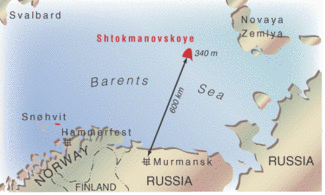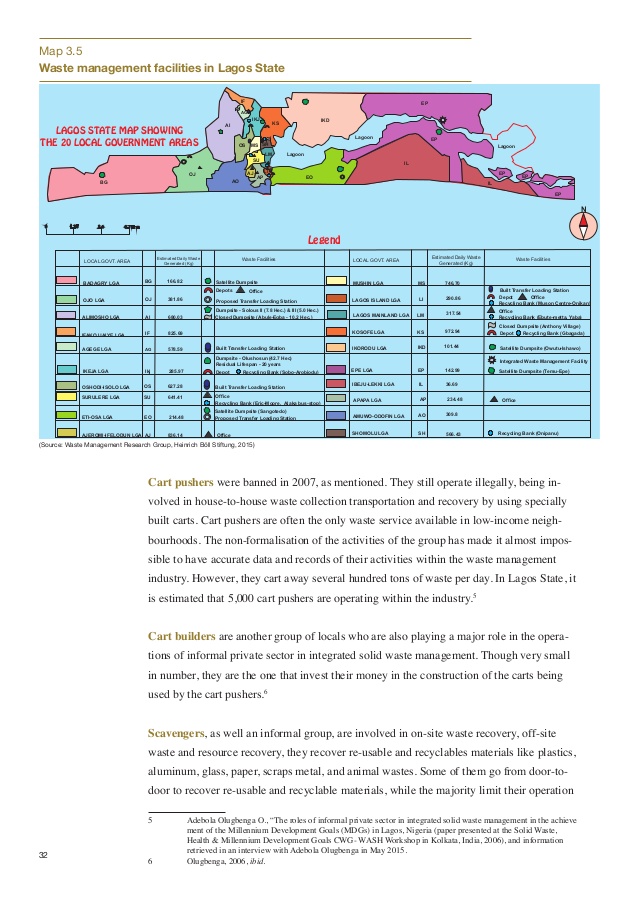Nigeria is the largest oil producer in Africa, holds the largest natural gas reserves on the continent, and is among the world’s top five exporters of liquefied natural gas (LNG). In 2018, the petroleum sector contributed 8.60% to Nigeria’s GDP but accounted for approximately 90% of Federal Government income. The Greenland Mineral Resources Portal is an entry point to all available geological information about mineral resources in Greenland. Use our interactive GIS-map to access and download a wide range of geological data for free. An Introduction to Nigerian Oil and Gas A little-known fact, even amongst Nigerians, is that oil production started in Nigeria over 100 years ago, in September 1909 to be precise. The search for crude oil was spearheaded by the Nigerian Bitumen Company, a private entity led by an American engineer, John Simon Bergheim. This high resolution PDF of the Suez region of Egypt shows the concessions and licences in the Gulf of Suez (See Egypt 2019 Concessions And Licences for all the other blocks and licences). Originally printed in The Oil & Gas Year Egypt 2019 as a poster sized pull-out this detailed file also lists operator information for each block. Oil prices also resulted in limited focused on strengthening infrastructure and employment, have spurred economic development. A rising star amongst global developing countries, Nigeria has been seen as an attractive destination for long-term investment. In addition, revenues and taxes from the oil and gas sector have been providing.
Petroleum, Oil, and Gas in Ethiopia
History of Exploration
Oil and gas in Ethiopia has a history which is a little over a century old. In 1860, an oil seep was discovered, but it wasn’t till the 1920’s that inexhaustible seeps of oil were verified.
It was generally referred to as oil in the Red Sea coast but was later attributed to specific areas in the Ogaden basin.
Places such as Garra Muleta, a mountainous region near the city of Harar, Jijiga, the capital of the Ethiopian Somali regional state, and the Gerger and Fafan river valleys.
The Ogaden basin covers 135,000 square miles (350,000 square kilometers) and is believed to hold massive reserves of natural gas and crude oil.
The area is geologically comparable with hydrocarbon rich basins in the Middle East and is created from sedimentary rocks up to six miles thick or 10,000 meters.
The first actual exploration of oil and gas in Ethiopia took place in 1915, the license was given to a subsidiary of the British and American owned Standard Oil Company.
The company would later be incorporated into the Esso group.
In 1945, the American Sinclair Oil Corporation entered the Ogaden region at the behest of Emperor Haile Selassie, but was hindered due to the citizens of Wardheer organizing mass demonstrations against them.
The German oil firm, Gewerkschaft Elwerath built roads and conducted exploration operations in 1959, within the Ogaden basin.
Between the years, 1950 and 1995, approximately 43 wells have been drilled in the Ogaden region.
In 1972-1974, an American company called Tenneco Oil Exploration drilled the first exploration well in the Elkuran area and discovered an estimated 68 million cubic meters or 2.4 billion cubic feet of gas.
The years 1977, 1978 and 1988 saw war between Somalia and Ethiopia for control of this resource rich region, making it impossible to develop the discovered gas.
Soviet Petroleum Exploration Expedition or SPEE confirmed extensive gas reserves in the Calub and Hilala areas of the Ogaden basin in 1980’s estimating them at 118 billion cubic meters.
Nigeria Oil And Gas Concessions Map And Licenses Bureau Of Agriculture
Since 1984, the ONLF or the Ogaden National Liberation Front has been fighting successive Ethiopian governments for self determination.
Threats made by this once declared rebel and terrorist group has hampered gas and oil development in the region.
One incident worth noting occurred in April of 2007, when the ONLF attacked and destroyed an oil exploration project facility within the basin near Obala and Abole, an oil field site operated by China’s Zhongyuan Petroleum Exploration Bureau (on behalf of Petronas) in the Ogaden basin.
The Abole incident saw 65 Ethiopians and 9 Chinese employees killed during a vicious attack on the project site.
Nigeria Oil And Gas Concessions Map And Licenses Bureau Nj
The response from the Ethiopian government and military was swift and just as vicious, a scorched-earth campaign policy was activated against the region, international organizations were refused entry, and human rights violations were rife.
The “Liyu” Police or special police units based in the Somali region of Ethiopia were the main culprits.
By 1999, the gas fields of Elale and Jeexdin in the Ogaden basin were being developed by Gazoil Ethiopia Project, which is a partnership between a Texan company called Sicor and the Ethiopian government.
Recent Developments
The Ogaden basin has since been divided into twenty one separate blocks making it easier to award concessions to companies.
Blocks attributed to oil are located throughout Ethiopia, in the northeast, southeast and southwest of the country.
So far, companies from all over the world have shown interest and received concessions in different parts of Ethiopia, including the Ogaden basin.
Companies such as Petronas from Malaysia, SouthWest Energy Ltd. from Hong Kong, Pexco Exploration from the Netherlands, Lundin East Africa from Sweden, Afar Explorer from the US, Africa Oil from Canada, New Age (African Global Energy) Ltd. from the UK, China’s Zhongyuan Petroleum Exploration Bureau, Poly-GCL Petroleum Investment Limited (China POLY Group Corporation and Hong Kong-based Golden Concord Group) from China, and the British Tullow Oil Ethiopia are among those conducting operations in the gas/oil/petroleum sector in Ethiopia.
Poly-GCL Leading the Ogaden Oil Extraction Race
Currently the company leading the development of natural gas and crude oil in the Ogaden basin is the Chinese owned company Poly-GCL.
Since 2007, the Malaysian company Petronas was working this same project till it was replaced by Poly-GCL due to a disagreement they had with the Ethiopian government.
According to International Consortium of Investigative Journalists (ICIJ) and their offshore leaks database, Poly-GCL Petroleum Investment Limited, is a Chinese Company with a subsidiary company named Poly Central Africa Petroleum Company, and is registered in the British Virgin Island, a tax haven.
In 2013, Poly-GCL signed 5 production sharing deals with the then Ethiopian Ministry of Mines to explore the Ogaden basin.

They agreed to pay 100 million dollars for the Calub and Hilala fields, and according to the deal they signed, they will give 15% share to Ethiopia, while they shall retain the majority with 85%.

Ethiopia will also be able to gain further revenue through land rent, income tax, and royalties.
By 2014, Poly GCL began attempting to develop the natural gas reserves in the gas fields of Hilala, Genale, and Calub; in addition to searching for more reserves in its license area measuring approximately 93,000 square kilometers in the Ogaden basin.
A new gas reserve at Dohar gas field located between Hilala and Calub was discovered and is estimated to have over 3 trillion cubic feet.
In 2018, Poly GCL was fortunate enough to have struck oil at their oil field of Hilala at the Hamanlei formation, where they had drilled three exploration wells.
All of the three wells have shown gas reserves with 2 of them having oil flows.
The test production phase of Hilala will see Poly GCL producing 450 barrels of oil, daily.
HE PM Dr Abiy Ahmed met today with the representatives of Poly-GCL Petroleum Investment Limited to officially kick start crude oil production test in Ogaden Region. The company has discovered that there is a prospect of commercial quantities of crude oil in the region.
#Ethiopia. pic.twitter.com/CbDVp4Aopc
— Fitsum Arega (@fitsumaregaa) June 27, 2018
Chief of Staff - Prime Minister’s office.
The new Ministry of Mines, Petroleum and Natural Gas has named the government run oil company Ethiopian Minerals, Petroleum and Bio Fuel Corporation (EMPBC) as the official body responsible for ensuring the oil operations are conducted according to the production sharing agreement.
Poly GCL and EMPBC have an agreement for cooperation prepared but have yet to officiate it with a signing.
In an area with a proven six to eight trillion cubic meters of crude oil, the Chinese company plans to construct a gas pipeline to Djibouti, where they will build a gas treatment plant, which will convert the gas into liquefied natural gas.
Nigeria Oil And Gas Concessions Map And Licenses Bureau Nyc
The converted gas will then be loaded on special ships specifically built to transport this gas, which will be exported directly to China.
This 4 billion dollar gas project will commence construction of the pipeline in September 2018 and is planned to be operational by early 2021.
Estimated annual revenue from this project is said to be in the eight billion dollar range.
New Age: Another Company Impacting The Ogaden Basin
A company with a promising future in the Ethiopian oil and gas sector is the British oil company New Age (African Global Energy) Ltd. which is currently working in the southeastern Ogaden basin and in Adigala with the Canadian firm Africa Oil.
New Age (African Global Energy) Ltd is relatively new to the African energy sector, established in 2007; they now have licenses for 13 onshore and offshore blocks in Congo-Brazzaville, Ethiopia, South Africa, and Kurdistan covering an area of about 88,000 square kilometers.
Continuing the operations that were started in 1972 by an American company called Tenneco, New Age (African Global Energy) Ltd., in 2013, found oil and gas flows at Elkuran at an appraisal well depth of 3,900 feet.
The Neglected Omo Basin
Another company making headway in the Ethiopian petroleum sector is the British company Tullow Oil Ethiopia.
Nigeria Oil And Gas Concessions Map And Licenses Bureau Of Education
The Tullow group is a private oil and gas, exploration and production group, with interests in over a hundred exploration and production licenses in twenty three countries which are managed as three regional business units namely the West and North Africa, South and East Africa and Europe, and the South America and Asia units.
They chose to focus their exploration on the untapped area in the southwestern part of Ethiopia, namely the South Omo basin, where they believe an oil reserve of 2.7 billion barrels exists.
South Omo is located in the tertiary East African Rift, north of Lake Turkana in neighboring Kenya.
Seismic and gravity data from the Canadian Africa Oil company shows strong leads and prospects throughout the South Omo project area.
The 18 month seismic study included one of the world’s largest airborne gravity surveys covering about 18,000 kilometers.
They found promising signs of significant oil reserves as the East African Rift is the last great rift basins to be explored.
Nigeria Oil And Gas Concessions Map And Licenses Bureau Of Revenue
Tullow began operations in 2013 and moved quickly to setup a rig with plans to drill over 2 wells in Tullow’s Ethiopian rift basin area.
Tullow has similar operations setup in Kenya and Uganda, but they believe the reserves in Ethiopia are by far the largest.
With a country rich in resources, it is hard to believe that mining contributes only 2% to the Ethiopian economy, while the economic structure continues to be led by agriculture which contributes 48 percent to GDP and employs 85 percent of the country’s workforce, according to Ethiopian Statistical Agency.
Nigeria Oil And Gas Concessions Map And Licenses Bureau Of Labor
Now that oil is flowing, these figures are sure to change.